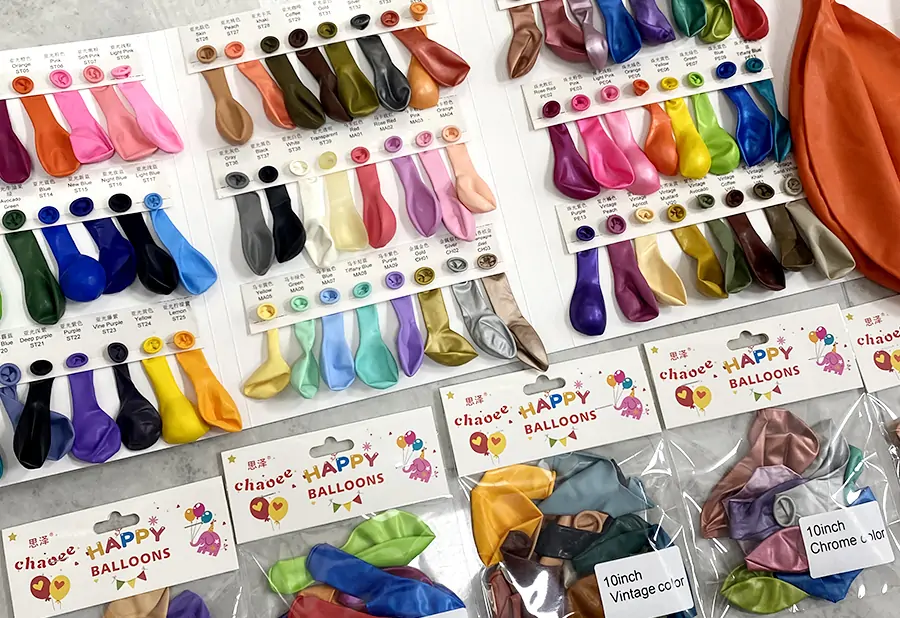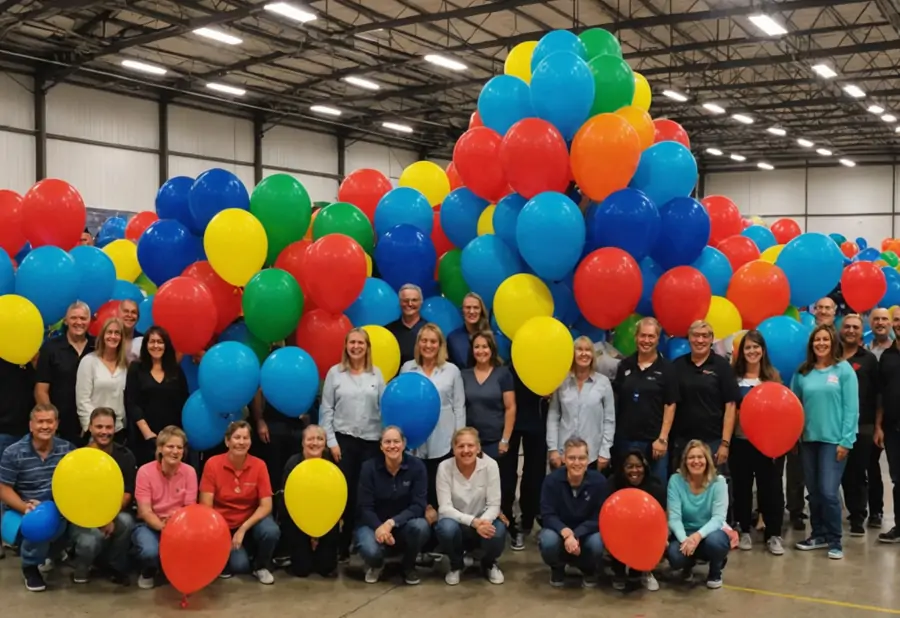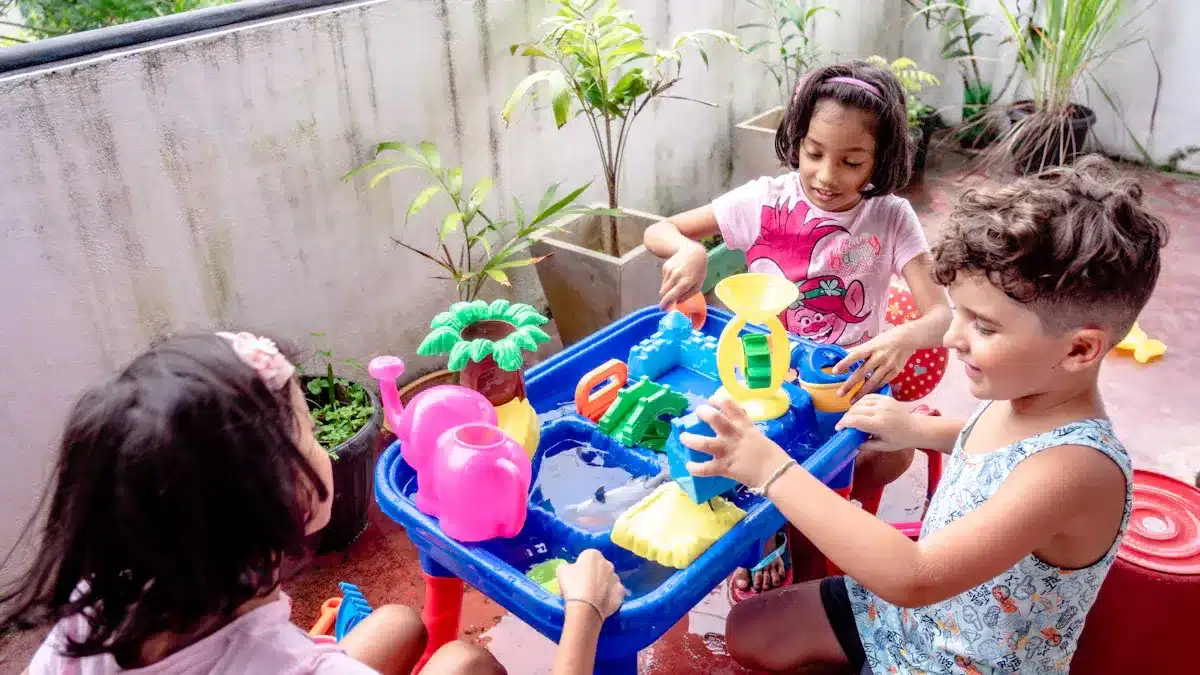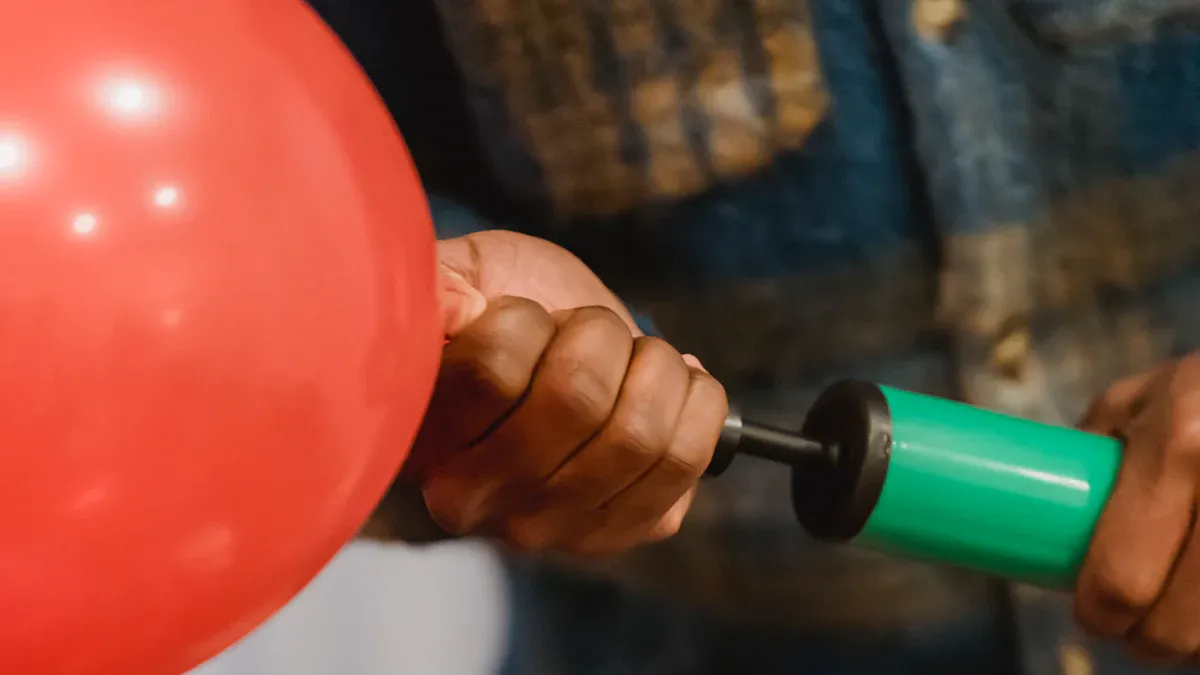In the competitive market of balloon manufacturing, establishing strong cooperative relationships with manufacturers is crucial for success. This requires not only finding reliable suppliers but also fostering partnerships built on trust, open communication, and mutual benefit. By working closely with balloon manufacturers, businesses can ensure the quality, timeliness, and cost-effectiveness of their balloon products. This introduction explores the strategies and best practices for building and maintaining strong cooperative relationships with balloon manufacturers, highlighting the importance of collaboration, transparency, and alignment of goals. Whether you are a small business or a large corporation, the ability to cultivate strong ties with manufacturers can lead to innovation, efficiency, and a competitive edge in the balloon industry.
The Fascinating World of Balloon Manufacturing: A Comprehensive Guide
Understanding the Balloon Manufacturing Processes: A Detailed Breakdown
Embracing Innovation: Exploring the Latest Trends in Balloon Manufacturing
The Shift Towards Sustainable Practices in Balloon Production
From Concept to Market: The Journey of a Balloon Design
Automation in Balloon Manufacturing: Streamlining Production Efficiency
Personalization in Balloons: How Technology is Reshaping Customization
The Balloon Industry’s Environmental Impact: A Closer Look
Forecasting the Future: Emerging Technologies and Market Trends in Balloon Manufacturing
Balloon Artistry: Pushing the Boundaries of Design and Creativity
Innovative Materials in Balloon Production: Balancing Durability and Eco-Friendliness
The Art and Science of Balloon Inflation: Maintaining Quality and Consistency
Challenges and Opportunities in the Balloon Manufacturing Sector
Sustainability in Balloon Manufacturing: Reducing Waste and Carbon Footprint
The Role of Consumer Preferences in Shaping Balloon Designs
Collaborations and Partnerships: Driving Growth in the Balloon Industry
The Global Market Landscape of Balloon Manufacturing: Regional Insights and Market Dynamics
Exploring Niche Markets: Specialty Balloons and Custom Orders
Educational Initiatives and Workforce Development in the Balloon Industry
Balloon Safety Standards and Regulations: Ensuring Product Quality and Consumer Safety
The Art of Balloon Decoration: Transforming Spaces with Creative Designs
From Parties to Advertising: The Versatility of Balloons in Various Applications
Adapting to Change: How Balloon Manufacturers Are Embracing Industry Disruptions
The Human Touch in Balloon Production: Craftsmanship and Attention to Detail
The Evolution of Balloon Printing: Enhancing Branding and Personalization
Conclusion: Envisioning the Future Landscape of Balloon Manufacturing
Lorem ipsum dolor sit amet, consectetur adipiscing elit. Sed eget nulla nec risus tristique efficitur. Integer varius, velit ac malesuada euismod, velit velit pharetra purus, eget imperdiet ligula ex vel nunc.

Developing Strong Partnerships with Balloon Manufacturers
Researching and Selecting the Right Partner
In the competitive world of balloon manufacturing, establishing strong partnerships with the right manufacturers is essential for the success of your business. Researching and Selecting the Right Partner.
To kickstart this process, it is imperative to delve deep into researching and selecting the right partner. Begin by evaluating potential manufacturers based on various criteria such as their reputation in the industry, the quality of their products, their production capacity to meet your demands, their commitment to safety standards, and their sustainability practices. By conducting a comprehensive analysis, you can ensure that the manufacturer you choose aligns perfectly with your business values and goals, setting a strong foundation for a fruitful partnership.
Negotiating Contracts and Agreements
Once you have identified a manufacturer that meets your criteria, the next crucial step is negotiating contracts and agreements. These documents serve as the blueprint of your partnership and should encompass vital details such as pricing structures, production timelines, quality control measures, sustainability initiatives, and distribution logistics. It is paramount to exhibit effective negotiation skills during this phase to ensure that both parties are content with the terms agreed upon. A well-crafted agreement not only protects your interests but also fosters a sense of mutual trust and understanding.
Establishing Effective Communication Channels
Beyond the signing of contracts, establishing and maintaining effective communication channels with your chosen manufacturer is fundamental. Clear and open communication from the outset helps in avoiding misunderstandings and aligning both parties towards common objectives. Regularly scheduled updates, whether through emails, phone calls, or face-to-face meetings, facilitate transparency and nurture trust in the partnership. Emphasizing honest and transparent communication lays the groundwork for a robust and enduring relationship with your manufacturing partner.
Implementing Quality Control Measures
Ensuring the quality of the balloon products is paramount for customer satisfaction and brand reputation. Collaborate with your manufacturer to establish stringent quality control measures throughout the production process. Conduct regular inspections, quality checks, and audits to maintain consistency and meet industry standards. By prioritizing quality, you not only enhance the value of your products but also build credibility in the market, fostering long-term customer loyalty.
Embracing Innovation and Sustainability
Incorporating innovation and sustainability practices in your partnership can set you apart in the market. Work closely with your manufacturer to explore eco-friendly materials, energy-efficient production methods, and recycling initiatives. Embracing sustainable practices not only demonstrates your commitment to environmental responsibility but also appeals to the growing segment of eco-conscious consumers. By staying ahead of trends and embracing innovation, you position your balloon manufacturing business as a forward-thinking and socially responsible entity.

Conclusion
Developing strong partnerships with balloon manufacturers is a multifaceted process that requires diligent research, effective negotiation, clear communication, quality assurance, and a commitment to sustainability. By following these best practices and fostering collaborative relationships with your manufacturing partners, you can propel your balloon manufacturing venture towards success in a competitive market landscape.
Promoting Innovation through Collaboration
Design and Development Strategies
Promoting innovation through collaboration has become essential for organizations to stay ahead. Effective design and development strategies are at the core of this initiative. It involves fostering a culture of creativity and teamwork, where ideas can flow freely among team members. Brainstorming sessions, prototyping, and continuous feedback loops are vital components of this process. These strategies help ensure that all team members are actively involved in the creative process, leading to the generation of groundbreaking ideas.
Ensuring Quality Control and Testing
Maintaining high standards of innovation requires a relentless focus on quality control and testing. Rigorous measures need to be put in place to identify any potential issues early on in the development cycle. Implementing robust testing procedures not only helps in detecting defects but also ensures that the final product meets the desired quality standards. By prioritizing quality assurance throughout the innovation process, organizations can minimize risks and deliver innovative solutions that meet or exceed customer expectations.
Implementing Feedback Mechanisms
Feedback mechanisms serve as the cornerstone of promoting innovation through collaboration. Open communication channels and feedback loops are crucial for fostering a culture of continuous improvement. Team members should feel encouraged to share their thoughts, suggestions, and concerns openly. By embracing feedback, organizations can leverage the collective intelligence of their teams, leading to enhanced creativity and innovation. Moreover, feedback mechanisms help in identifying areas for refinement, thus enabling teams to iteratively enhance their innovative outputs.
Collaborative Platforms and Tools
In the digital age, leveraging collaborative platforms and tools can significantly enhance the innovation process. Technologies such as project management software, virtual collaboration tools, and cloud-based platforms facilitate seamless communication and collaboration among team members, irrespective of their physical locations. These tools not only streamline workflow processes but also enable real-time sharing of ideas and feedback, fostering a dynamic and innovative work environment.
Conclusion
Promoting innovation through collaboration is not just a strategy but a mindset that organizations must cultivate to drive success in today’s competitive landscape. By embracing effective design and development strategies, ensuring stringent quality control measures, implementing robust feedback mechanisms, and leveraging collaborative platforms, organizations can foster a culture of innovation that propels them towards sustainable growth and competitiveness.
Success Stories: Exemplary Cooperative Relationships
Company X: A Strategic Partnership
In this section, we will delve into the success story of Company X and how they established a strategic partnership that led to mutual growth and success. We will explore the key elements of their partnership, the challenges they faced, and the strategies they implemented to overcome obstacles. Company X, a startup in the tech industry, recognized the need to scale their operations and reach a wider market. Through a well-thought-out strategic partnership with a larger established company, Company X was able to leverage their partner’s resources, expertise, and market presence to expand rapidly. This case study highlights the importance of identifying complementary strengths in a partnership and aligning goals for long-term success.
Company Y: Lessons in Collaboration
The journey of Company Y serves as a valuable lesson in the power of collaboration. We will analyze how Company Y fostered a culture of teamwork and cooperation both internally and externally. By examining their collaborative efforts with partners and stakeholders, we will uncover the secrets to their success and the impact it had on their business growth. Company Y’s story demonstrates the significance of transparent communication, shared values, and a commitment to mutual growth. Through open collaboration, Company Y was able to innovate faster, respond to market changes effectively, and build strong relationships with key industry players. Their emphasis on building trust and fostering a collaborative environment led to increased productivity and a positive company culture.
Expanding on these success stories, it is evident that establishing and nurturing cooperative relationships is fundamental in achieving sustainable growth and success in today’s competitive business landscape. Collaborations, like the ones exemplified by Company X and Company Y, showcase the power of synergy and shared goals in driving innovation and market expansion.
Moreover, these success stories underscore the importance of trust, communication, and a shared vision in fostering strong partnerships. By aligning strategic objectives and leveraging each other’s strengths, companies can overcome challenges, mitigate risks, and create new opportunities for growth.
The success stories of Company X and Company Y serve as inspiration for businesses looking to forge meaningful cooperative relationships. They demonstrate that by working together, companies can achieve remarkable outcomes that benefit not only the partners involved but also the broader business ecosystem.
Sustaining Cooperative Relationships
In any collaborative effort, maintaining strong and effective relationships is crucial for success. Here are key strategies to sustain cooperative relationships:
Regular Progress Updates and Meetings Keeping all stakeholders informed about the progress of the project through regular updates and meetings helps in maintaining transparency and alignment of goals. It also provides an opportunity to address any emerging issues promptly and adjust strategies as needed. Moreover, these updates foster a sense of involvement and ownership among team members, enhancing their commitment to the project.
Resolving Challenges and Conflicts Conflict resolution is an inevitable part of any partnership. Addressing challenges and conflicts openly and constructively can strengthen relationships and lead to innovative solutions. Encouraging open communication, active listening, and a willingness to compromise can help in navigating through difficult situations. Additionally, seeking common ground and focusing on shared objectives can turn conflicts into opportunities for growth and collaboration.
Celebrating Achievements Recognizing and celebrating milestones and achievements, no matter how small, boosts morale and motivates team members to continue working towards common objectives. Publicly acknowledging individual and team accomplishments not only reinforces positive behavior but also cultivates a culture of appreciation and recognition within the organization. Furthermore, celebrating successes together fosters camaraderie and reinforces the sense of unity and purpose among team members.
Building Trust and Empathy Trust and empathy form the foundation of strong relationships. Establishing trust among team members and partners is essential for fostering cooperation and collaboration. This can be achieved through consistent communication, reliability, and mutual respect. Additionally, cultivating empathy allows individuals to understand each other’s perspectives, feelings, and needs, leading to more effective problem-solving and conflict resolution.
Continuous Improvement and Feedback Embracing a culture of continuous improvement and feedback is vital for sustaining cooperative relationships. Encouraging a growth mindset and a willingness to learn from both successes and failures promotes innovation and adaptability within the team. Providing constructive feedback and actively seeking input from all stakeholders demonstrate a commitment to growth and development, fostering a collaborative environment built on trust and mutual support.
By implementing these strategies and fostering a culture of collaboration, organizations can nurture sustainable cooperative relationships that drive success and foster innovation in the long term.
Conclusion
Fostering strong cooperative relationships with balloon manufacturers is crucial for ensuring a successful and sustainable business in the balloon industry. By prioritizing communication, mutual respect, and collaboration, businesses can not only streamline production processes and improve product quality but also create a foundation for long-term partnerships that benefit all parties involved. Embracing a cooperative mindset is key to navigating the challenges and seizing the opportunities present in the dynamic balloon manufacturing landscape.

































